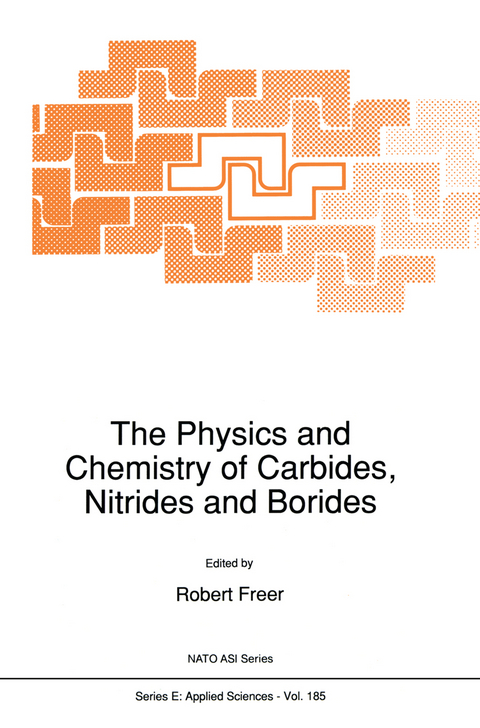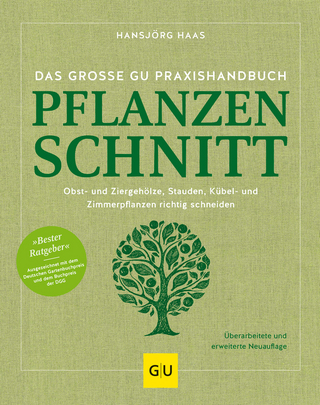
The Physics and Chemistry of Carbides, Nitrides and Borides
Springer (Verlag)
978-94-010-7444-5 (ISBN)
Carbides, nitrides and borides are families of related refractory materials. Traditionally they have been employed in applications associated with engineering ceramics where either high temperature strength or stability is of primary importance. In recent years there has been a growing awareness of the interesting electrical, thermal and optical properties exhibited by these materials, and the fact that many can be prepared as monolithic ceramics, single crystals and thin films. In practical terms carbides, nitrides and borides offer the prospect of a new generation of semiconductor materials, for example, which can function at very high temperatures in severe environmental conditions. However, as yet, we have only a limited understanding of the detailed physics and chemistry of the materials and how the preparation techniques influence the properties. Under the auspices of the NATO Science Committee an Advanced Research Workshop (ARW) was held on the Physics and Chemistry of Carbides, Nitrides and Borides (University of Manchester, 18-22 September, 1989) in order to assess progress to date and identify the most promising themes and materials for future research. An international group of 38 scientists considered developments in 5 main areas: The preparation of powders, monolithic ceramics, single crystals and thin films; Phase transformations, microstructure, defect structure and mass transport; Materials stability; Theoretical studies; Electrical, thermal and optical properties of bulk materials and thin films.
I. Powders, Ceramics and Single Crystals — Preparation and Characterisation.- Chemical Routes for the Preparation of Powders.- Silicon Nitride: Relations Between Powder Characteristics and Sinterability.- Kinetics of the Nitridation of Silicon.- Lanthanum Silicon Oxynitrides, Synthesis and X-Ray Diffraction and IR Studies.- Synthesis of Silicon Carbide of Different Morphologies and the Effect of Second Phase in Ceramic Composites.- Laboratory Methods for the Preparation of Boron Carbides.- Preparation and Properties of Icosahedral Borides.- Production, Fabrication and Uses of Borides.- Laser Ablation ICP-MS Analysis of Ceramic Materials.- II. Synthetic Diamond — Preparation and Properties.- Metastable Synthesis of Diamond.- Selected-Area Deposition of Diamond Films.- Surface Analysis of Diamond Nucleation on Silicon and Electron Microscopy of the Diamond/Silicon Interface.- Electrical Properties of B Doped CVD Grown Polycrystalline Diamond Films.- III. Structure, Crystal Chemistry, Phase Equilibria, Defects and Mass Transport.- Silicon Carbide: Structure and Polytypic Transformations.- Crystal-Chemistry of Transition Metal Hemicarbides.- Structure and Properties of Si-Doped Boron Carbide.- Actinoidmetal Boron Carbides.- Defects and Grain Boundaries in High Temperature Deformed ?-SiC.- Application of Transmission Electron Microscopy to the Study of Transition Metal Carbides.- Defect Structures and Order-Disorder Transformations in Transition Metal Carbides and Nitrides.- Mass Transport in Carbides and Nitrides.- IV. Thermal, Chemical and Mechanical Stability.- Thermal Shock and Corrosion of SiC — A Combustion Chamber Model Case Study.- High Temperature Corrosion of Silicon Nitrides (abstract only).- Corrosion and Mechanical Properties of Silicon Nitride BasedCeramics. Influence of Microstructural Changes.- The Role of Oxygen in Non-Oxide Engineering Ceramics.- Thermochemical Predictions of Metal-Metal Carbide Stabilities in Relation to WC and WC-Co Production.- Si3N4-SiC Composites.- Boride-Carbide Composites: TiB2-TiC-SiC.- V. Theoretical Studies.- Electronic Structure of Stoichiometric and Non-Stoichiometric Titanium Carbides and Nitrides.- Further Electronic Structure Studies of Boron and Boron-Rich Borides.- The Electronic Structure of Crystalline Boron Carbide I: B12 Icosahedra and C-B-C Chains.- Electronic Structure of Lithium Boride Li3B14.- VI. Bulk Materials and Thin Films — Electrical, Optical and Thermal Properties.- Optical and Electronic Properties of SiC.- Recent Advances Regarding the Definition of the Atomic Environment, Film Growth and Microelectronic Device Development in Silicon Carbide.- Thermal Conductivity of Transition Metal Carbides.- The Dielectric Properties of Nitrides.- Current Status of the Research on III-V Mononitride Thin Films for Electronic and Optoelectronic Applications.- Short Range Order in “Amorphous” Thin Films of Titanium Diboride.- On the Electronic Transport Properties of Boron Carbide.- Theory of Electronic and Thermal Transport in Boron Carbides.- Optical Properties of Boron-Rich Solids with Icosahedral Structure.- Compound and System Index.
| Reihe/Serie | NATO Science Series E ; 185 |
|---|---|
| Zusatzinfo | XII, 734 p. |
| Verlagsort | Dordrecht |
| Sprache | englisch |
| Maße | 155 x 235 mm |
| Themenwelt | Sachbuch/Ratgeber ► Natur / Technik ► Garten |
| Naturwissenschaften ► Chemie ► Technische Chemie | |
| Technik ► Elektrotechnik / Energietechnik | |
| Technik ► Maschinenbau | |
| ISBN-10 | 94-010-7444-5 / 9401074445 |
| ISBN-13 | 978-94-010-7444-5 / 9789401074445 |
| Zustand | Neuware |
| Haben Sie eine Frage zum Produkt? |
aus dem Bereich


